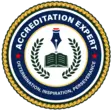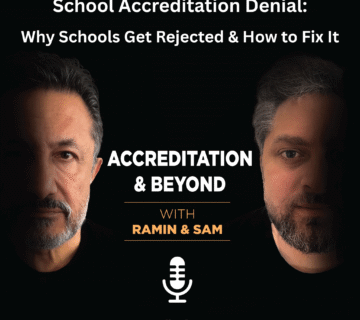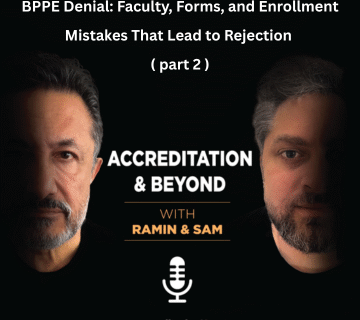
In this fourth installment of our series on staying compliant with the Bureau for Private Postsecondary Education (BPPE) regulations, we delve into the critical areas of compliance inspections, institutional responsibilities under applicable laws, and the essential steps for preparing for both announced and unannounced inspections. Our goal at Accreditation Expert Consulting is to equip higher education institutions, vocational schools, and colleges with the necessary knowledge and tools to confidently navigate regulatory requirements and achieve long-term operational success.
1. Institutional Compliance with Applicable Laws
Preparing for BPPE Compliance Inspections
The BPPE has the authority to ensure that institutions comply with the bureau’s requirements. This includes requiring additional reports, conducting site visits, and requesting documents to monitor compliance effectively. Institutions should establish proactive compliance strategies, ensuring that they are always prepared for potential evaluations.
Types of Inspections
- Announced Inspections: These are scheduled in advance, allowing institutions to prepare and collaborate with compliance analysts to meet all standards. During the desk review phase of an announced inspection, institutions must submit key documents, including the General Information Form, STRF Minimum Requirements, Catalog Minimum Requirements, Enrollment Agreement Minimum Requirements, Annual Report Minimum Requirements, and Institutional Website and Advertisements Minimum Requirements.
- Unannounced Inspections: These occur without prior notice and are designed to provide an authentic snapshot of the institution’s operational compliance. Institutions must implement internal audit procedures to stay prepared for these inspections. After an unannounced inspection, an exit briefing will be conducted with the institution’s administrator, and if necessary, a Notice to Comply will be issued.
Both inspections aim to verify the institution’s adherence to BPPE standards. Each institution undergoes at least one announced and unannounced inspection every five years. Institutions that fail to meet compliance standards may face fines, operational restrictions, or even license suspension.
2. Key Compliance Areas
Document Preparation and Review
Before an announced inspection, institutions must provide various documents such as the General Information Form, Student Tuition Recovery Fund (STRF) supporting data, catalog, and enrollment agreement. These documents help the compliance analyst verify that the institution meets all regulatory requirements. Failing to submit accurate and up-to-date documents can result in compliance violations and potential penalties. Regular internal document audits can help institutions stay ahead of compliance requirements.
Student Tuition Recovery Fund (STRF)
During inspections, compliance analysts review STRF Assessment Reporting Forms and supporting data to ensure accurate collection and reporting of STRF fees. This fund is crucial for aiding students who suffer economic losses due to institutional failures. Institutions should regularly audit their STRF reports to identify and correct discrepancies before an inspection. Maintaining transparent records of STRF contributions helps institutions demonstrate compliance more effectively.

Enrollment Agreements and Catalogs
The bureau analyzes these documents to identify any potential violations. Institutions have the opportunity to address and correct any issues identified during the inspection, ensuring that all provided information is compliant and up-to-date. Institutions must ensure that their enrollment agreements align with BPPE regulations and include all required disclosures to avoid penalties. Enrollment agreements must contain specific language related to STRF, as outlined in Title 5, California Code of Regulations, Section 76215(a). This includes providing clear refund policies, program duration details, and accreditation status where applicable.
School Performance Fact Sheets (SFPS)
Compliance analysts will request and review the supporting data for SPFS, which includes detailed information about student outcomes, employment, and satisfaction. This ensures that the institution provides transparent and accurate information to prospective and current students. Failure to maintain accurate SPFS data can result in compliance issues and affect an institution’s reputation. Institutions should ensure that SPFS data is regularly updated and reflects the latest student outcomes to maintain credibility.

3. Tips for Successful Inspections
- Maintain Up-to-Date Contact Information: Ensure the bureau has the latest contact details to ensure timely communications about inspections. Institutions are also required to notify the Bureau within 30 days of any actions taken by government regulators or accrediting agencies, as specified in the California Education Code Section 94801.5(a)(3).
- Regularly Review Compliance Documents: Institutions should periodically review and update their STRF data, enrollment agreements, and catalogs to ensure compliance before inspections. Setting up an internal compliance review schedule can help prevent last-minute errors. Institutions must also submit quarterly STRF Assessment Reporting Forms and remit payments (if applicable) to the Bureau no later than the last day of the month following the close of each quarter. Assigning a compliance officer to oversee document updates ensures ongoing adherence to BPPE standards.
- Prepare Comprehensive Student Records: Detailed and organized records, including admissions data, financial transactions, and academic progress, should be readily available for review. Digitizing records can streamline the audit process and ensure easy accessibility during inspections. Institutions should use compliance management software to track and organize records efficiently.
- Understand and Implement BPPE Requirements: Familiarity with BPPE regulations and proactive compliance are key to passing inspections smoothly. Institutions should consider professional compliance training for staff to enhance awareness and adherence to regulations. Partnering with accreditation consultants can also provide valuable guidance in maintaining regulatory compliance.
4.Conclusion
Remaining compliant with BPPE regulations is essential for the credibility and operational success of postsecondary educational institutions in California. By understanding the nuances of BPPE inspections and maintaining rigorous internal compliance reviews, institutions can ensure they meet all legal requirements and provide a high-quality educational experience. Proactive compliance measures not only help avoid penalties but also strengthen institutional credibility and student trust. Ensuring continuous compliance safeguards an institution’s ability to operate and maintain accreditation.
For further assistance or to ensure your institution is fully prepared for a BPPE inspection, please contact Accreditation Expert Consulting. Our experienced professionals are here to guide you through every step of the compliance process.
Stay tuned for Part 5 of our series, where we will continue to explore more aspects of BPPE compliance, ensuring your institution’s success and regulatory alignment.




